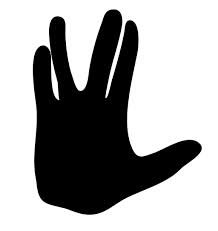Has a New Gesture Entered Our Visual Vocabulary?
Medical Pharmaceutical Translations • Jan 6, 2014 12:00:00 AM

Something very funny happened at a Kentucky Wildcats basketball game the other day. Actor Josh Hutcherson, who hails from Kentucky and who plays Peeta Mellark in the Hunger Games movies, was a special guest. When he was introduced to the crowd, instead of clapping, fans held up three fingers in the gesture that shows respect, and, later, defiance, in the Hunger Games universe.
Not everyone is a fan of The Hunger Games, but enough people know about the series to understand the significance of this gesture. Although it’s an extremely specific reference, this incident shows that, to some degree, the hand sign has now entered our non-verbal vocabulary. I started to wonder how often this happens. New words are created all the time, as anyone who just got through the summer and fall of 2013 will remember, with the popularization of the term “twerking”. But what about gestures?
At first, this seemed like it might be an easy question, until I thought about just how many gestures we use or understand. This Wikipedia page features an extensive list of them, but I’m sure it’s not exhaustive. Some, like “thumbs up”, have been around since ancient times, and others, like pointing one’s index finger to indicate something, seem to have their origins in simple common sense and utility. But what about recent gestures?
The first thing I learned in my research that surprised me is that sticking up one’s middle finger has been an insulting gesture since the days of Ancient Greece and Rome. That it’s still so shocking, and is even blurred or blocked on some TV shows in the US, shows amazing staying power. The second surprising thing I learned is that the high five is a recent invention – it was first documented being used by American athletes in the late 1970’s!
The 1990’s was a big time for hand gestures that can still be recognized today. Among them are the “Loser” sign, the “Whatever” gesture, and “Talk to the hand”. Interestingly, this last one has remained, but the phrase itself has become old-fashioned – maybe because it was said so many times and printed on t-shirts and was just EVERYWHERE at the time that we’re collectively “over it” – or maybe it’s simply a case of evolution: the gesture says it all, and there’s no need to explain it anymore.
Unlike the Hunger Games salute, none of these gestures seems to have evolved purely from a pop culture phenomenon. My research did turn up one other modern gesture that did, though (and Trekkies, please forgive me that it didn’t immediately come to mind): the Vulcan Salute, first seen in the classic 1960’s TV version of Star Trek.
I came across another pop culture-inspired gesture when I was reading the news a few days ago. The quenelle is an inverted Nazi salute created by French comedian and activist Dieudonné M’bala M’bala in the late 2000’s. It’s since been used by fellow anti-Zionists and anti-Semites, as well as some French athletes and everyday people who deny its darker context and say it simply shows defiance. The quenelle gained international notice when French soccer player Nicolas Anelka made the gesture at a December 28 match in England, where he plays. Anelka said the quenelle was just a way of saying “hi” to his pal Dieudonné, but not too many people seem satisfied with that explanation.
Will the Hunger Games gesture or the quenelle ever become as popular as the Vulcan Salute? I’m not sure. After all, while the Vulcan Salute is a greeting and sign of peace, the other two don’t have such a common function. Still, you never know. Although I hope the quenelle will fade away, maybe the odds will be in the Hunger Games gesture’s favor, and a few decades from now, it will be a sign like so many others we’ve incorporated into our corporal language.
